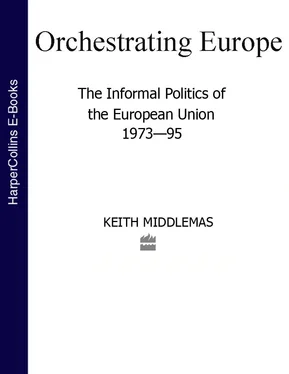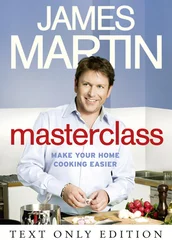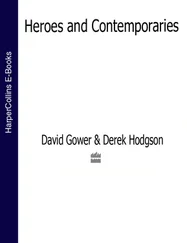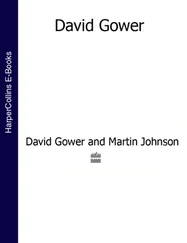The dollars were made available for vital import requirements. Only 17% was spent directly on imports of ‘machinery and vehicles’, the rest went on raw materials and agricultural products. The importers, however, paid the equivalent in domestic currency to their governments who were free to use the money on capital projects. This mechanism freed domestic funds for capital formation and, since ECA approval was required before the funds could be spent, it allowed US planners to influence directly the direction of economic change. In addition, for example by refusing funds to Italian firms that dealt with non-’free’ (i.e., communist) trade unions, it also permitted their intrusion into the politics and societies of European states.
The macroeconomic impact of the ERP on European economies has recently been questioned. Certainly it did not save the continent from ruin and starvation since, by the time its funds came on stream in mid–1948, that moment had long passed. Instead, it contributed to the maintenance of already high investment levels, with the greatest relative impact in the first two years. However, funding was not on a scale sufficient to explain the super-growth of the 1950s. It is true that in 1948 and 1949, the contribution of ERP funds to gross domestic capital formation touched 30% in Germany and Italy, but in both countries the global figures were particularly low. The more usual level was around 10%, as it was also for Italy and Germany in 1950 and 1951; a useful but not decisive contribution. New calculations suggest that aid directly contributed only 0.5% per annum to annual growth in this period. Indirectly, the flow of funds for raw materials itself released resources for investment and the secure planning horizons might also have contributed to raising investment and output targets. The ERP also reduced the tension of the said structural adjustment. At a time when demand exceeded supply by 7.5%, an addition of 2.5% to GNP reduced the potential conflict about how wealth should be distributed between labour and capital. 9
Not unnaturally, the Americans were reluctant to see their funds siphoned off into competing national schemes, each presumably demanding further measures of national protection. They insisted from the start that the funds be allocated according to pan-European criteria and in the service of a pan-European plan. The European criterion for aid assessment was adopted. It was taken as the size of the dollar gap rather than any estimate of size of income or degree of damage. A European plan also emerged, aimed at the previously prescribed goal of balance of payments equilibrium by 1952. However, a closer reading of the European plan demonstrates that it was little more than the aggregation of separate national plans. The Americans had more success in encouraging measures for the freeing of trade and payments from national constraints and protectionism. Although the causes of the economic growth of the 1950s, and the even more spectacular expansion of trade that accompanied it, are many and complex, at an institutional level it was the ERP, through the OEEC, that laid the foundations.
In October 1949, the ECA administrator, Paul Hoffman, made a major speech to the OEEC in which he called repeatedly for ‘integration’ as the price for a continued, generous level of dollar aid. ‘The substance of such integration’, he went on, ‘would be the formation of a single large market in which quantitative restriction on the movement of goods, monetary barriers to the flow of payments and, eventually, all tariffs are permanently swept away.’ Although the OEEC had experimented in 1948 and 1949 with some limited multilateral payments schemes and was at that moment considering a (modest) start to a programme of quota removal, Hoffman’s speech had the effect of concentrating minds wonderfully.
In case the OEEC was in doubt about the direction of American thinking, another ECA official, Richard Bissel, produced an outline for a European Payments Union (EPU), a discriminatory soft-currency zone, which in its detail went far beyond the usual policy advice. The Americans also pledged themselves to providing a sum of $350 million for the EPU’s working capital. It is interesting to note that the EPU was a recognition that another American creation, the IMF, was incapable of supervising Europe’s transition to convertibility. However, its rules and objectives were oriented towards the attainment of full, non-discriminatory currency convertibility. The sterling crisis of 1947 had demonstrated that any such move would rapidly have drained the IMF of its loanable funds. All the IMF could do was to recognize the serious structural problems facing the continent and sanction the discriminatory currency practices that were already commonplace.
The European Payments Union (EPU) embraced all OEEC members and came into operation in September 1950, its structure being an interesting innovation in the OEEC, which is commonly known as an ‘inter-governmental’ institution. In order to resolve conflicts, the EPU included a Special Restricted Committee of five persons chosen by lot from a list of nominees proposed by the member states, with the proviso that none of the committee members could be citizens of the countries involved in the dispute. The committee reported to the OEEC Council which then pronounced judgement. The Managing Board of the EPU, comprising seven representatives and one American observer, adjudicated using majority voting. This, too, was at odds with standard OEEC procedure, but since the Board was responsible to the OEEC Council, serious disputes were likely to end up before them anyway.
Of the initial $350 million granted to the EPU, some $80 million was immediately allocated to countries with ‘structural’ payments problems, while the remainder provided the working capital of the Union. This money was necessary to bridge the gap in the arrangements for debtors and those for creditors. The system worked thus: for each country, a margin of deficit was calculated (equivalent to 15% of the value of trade) that would receive some automatic credit on its intra-European transactions. This figure was demarcated according to five steps. In the first step, the debtor received 100% credit; in the second, he received 80% credit but had to pay the rest in gold or dollars. The amount of hard currency payable was increased until the fifth step, when only 20% was covered by credit and the rest in hard currency. Beyond that, all transactions took effect in hard currency. Overall, within the EPU allocation, a debtor could rely on a credit covering 60% of any deficit. A similar situation prevailed for creditors within the Union but although the overall position was the same (60:40), the steps were not synchronized, with the effect that creditors received hard currency from the Union earlier than the debtors were paying it in. It was to cover this gap that the dollar funding was intended. 10
No sooner had the EPU been installed than it was put to the test. The German economy already had a huge deficit in autumn 1950 and the situation was rapidly deteriorating. With the exhaustion of its quota in sight, the EPU extended an extra credit line and, in February 1951 acknowledged the need for a reintroduction of quotas and the creation of state monopoly import agencies. By the summer of 1952, the crisis had been weathered and an upturn in exports allowed Germany to reopen its markets. Similar, though less violent, crises hit the United Kingdom and France in these early years and it was the EPU that provided the means whereby countries were not forced to adopt violent deflationary measures. Moreover, although in every case there was some backsliding in the commitment to hold back levels of import quotas, the fact that EPU and the OEEC’s ‘trade liberalization’ scheme (of which more below) were in existence, acted as a control over a more drastic and dislocating return to temporary protection.
Читать дальше









![Brian Thompson - A Monkey Among Crocodiles - The Life, Loves and Lawsuits of Mrs Georgina Weldon – a disastrous Victorian [Text only]](/books/704922/brian-thompson-a-monkey-among-crocodiles-the-life-thumb.webp)


